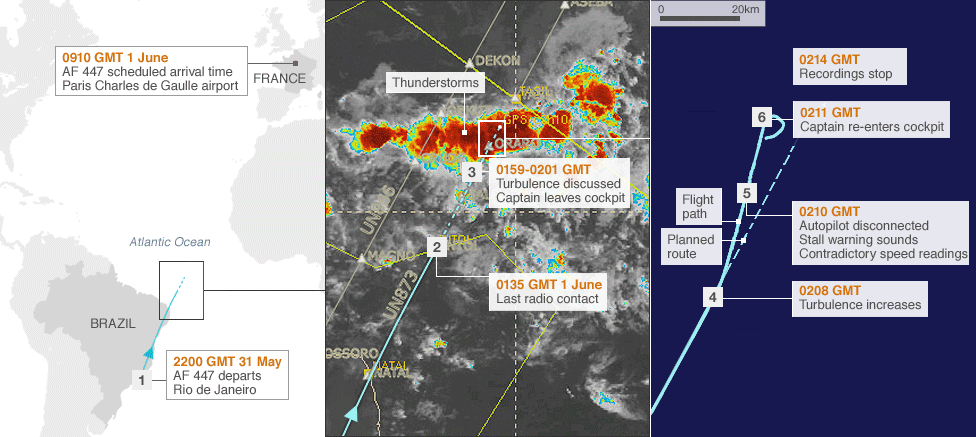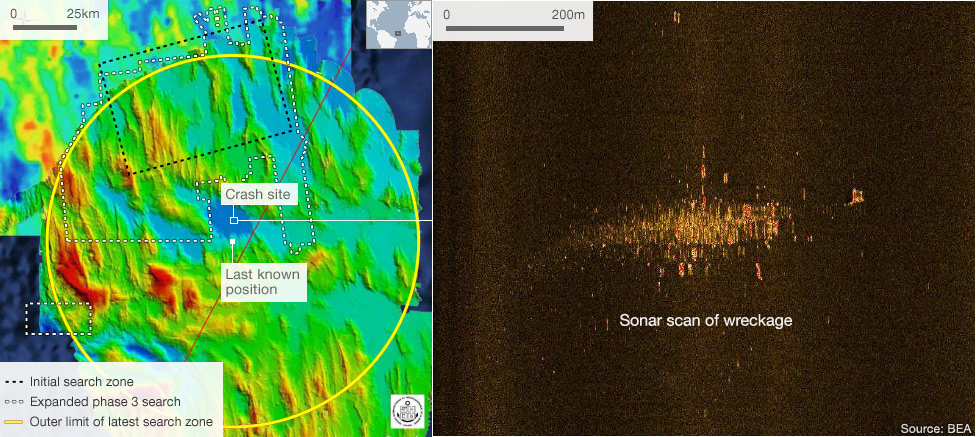.
Air France crash: The long hunt for answers
Technical failure and human error were the main causes of the crash of Air France Flight 447, which disappeared over the Atlantic Ocean on 1 June 2009, killing all 228 people onboard. A painstaking 3 year investigation saw the plane's wreckage and two "black box" recorders retrieved from the sea bed.
How Flight 447 disappeared

En route from Rio to Paris, the Airbus A330-203 crashed after running into a high-altitude thunderstorm hours after departure. Investigators concluded that speed sensors on the plane failed and gave false readings, causing the plane to stall. The pilots then failed to follow correct procedure and lost control of the aircraft, which plunged 38,000ft into the ocean. The captain was on a break when problems began and investigators concluded that the co-pilots did not have the training to deal with malfunctioning equipment. Investigators have found faults with both Air France and Airbus, and both companies are under investigation by magistrates for alleged manslaughter.
Key wreckage found and location of 'black boxes'

Air investigators were able to explain the exact circumstances of the crash thanks to the discovery in May 2011 of the flight's two black box recorders. Although 50 bodies and hundreds of pieces of the aircraft - including part of the tail - were found in the days after the crash in 2009, the bulk of the plane, the rest of the victims' bodies and the crucial cockpit voice recorder and flight data recorder were not discovered until spring 2011.
Two years of deep-sea searches

The discovery of the wreckage and black box recorders was the result of a long and costly search. A number of missions were launched, but failed to find the accident site. Then, after the search was centred on the plane's last known position, and then focused on a 10,000-sq-km area of sea bed, search teams on board the ship the Ile de Seine finally located the rest of the wreckage in April using specialist sonar robots.
The search technology

The main tools used in this year's successful search were Remus 6000s. These torpedo-shaped robots can travel for up to 22 hours, scanning the sea bed with sonar and imaging a half-mile-wide swath with every pass. The next stage of the mission involved Remora 6000s, which helped retrieve what was found. The remote operated vehicle prepared objects on the sea bed ready for winching to the surface.
Salvage operation

Phoenix International's Tim Weller showed Tom Burridge the kind of vehicle the US-based firm will be using to recover the wreckage.
~RS~q~RS~~RS~z~RS~22~RS~)

 Co-pilot 'wanted to destroy plane'
Co-pilot 'wanted to destroy plane'